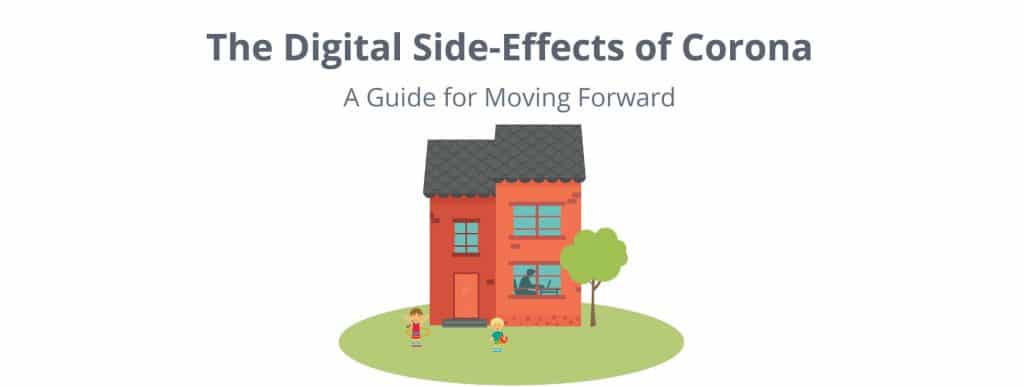Introduction
Twenty-first-century society is facing a wholly new scenario:
An urgent need to isolate in order to stem the spread of COVID-19. As I write this, hundreds of millions of people worldwide are hunkered down in their homes, physically cut off from their offices, schools, social and religious institutions, gyms, clubs, restaurants, and bars.

Online is King
One of the hardest aspects of self-isolation is keeping the household well-stocked.
To begin with, most families eat one, if not two, meals outside of the home each day.
With everyone home, supplies are depleted more quickly, yet many local stores are closed or have been picked over by panicked shoppers (for some unfathomable reason, much of the world is convinced that COVID-19 has put an end to the production of toilet paper!). Empty shelves are a fact of life.
For many, online retail has been the only option. According to Digital Commerce 360, “Online sales have increased 52% compared with the same time frame a year ago, and the number of online shoppers has increased 8.8% since the coronavirus began.”
Digital has also been instrumental in keeping us sane. Over the past few days, we’ve seen many creative ways people are leveraging social media to keep us entertained and engaged as we self-isolate, including Twitter-based film clubs and Big Kitchen Disco. School musicals have been moved to YouTube (and have found much bigger audiences). It’s difficult not to be awed by the ingenuity of humankind armed with a device and internet connection.
Of course, the online world will always have nefarious players.
Today we see quacks selling bogus cures for coronavirus and other hoaxes while others peddle conspiracy theories, like COVID-19 was made as an attempt to force vaccines on us.
Accredited news media has never been more important, and it’s a role they’re stepping up to with aplomb.
For instance, newspapers like The New York Times, The Guardian, Le Monde, Die Welt, allow free access to all of its coronavirus coverage.
Social scientists and marketers alike understand just how much people are creatures of habit. We shop at certain stores and favor specific brands because that’s what we’ve always done. But COVID-19 driven restrictions are forcing us to change, opening up a rare opportunity for brands to win new customers.
The target audience implications
Just when marketers need to advertise the most they’re finding the tools they relied on -behavioral, intent and in-market targeting – are no longer relevant. Why? – To begin with, consumer behavior has changed dramatically. We’re checking news sites much more frequently to keep up-to-date with the pandemic.
We’re visiting health and government sites, often for the first time, to learn how coronavirus is affecting our immediate surroundings. We’re seeking a wider array of online entertainment for the kids, and allowing them more screen time than we normally would in order to keep them occupied as we try to get some work done. In other words, all of the behavioral and intent data we generate today is profoundly skewed.
Here’s where targeting by household characteristics – size of home, income, presence of children, renters or owners, apartment or house with a garden and so on – comes into play. Unlike the new behaviors brought about by home isolation, household characteristics are extremely stable. For instance, households with children will need to purchase children’s clothes, books, toys and so on, whereas households with pensioners need a completely different set of consumer products. Knowing which households are right for your product offerings will help you to expand your brand’s footprint.
Additionally, household characteristics cover the entire market, allowing you to get your message to all people who are home isolating and consequently open to forming new shopping habits.
Finally, targeting by household characteristics removes the guesswork in determining if a consumer actually needs a product or service. In the behavioral data world, a consumer who looks at a children’s health site is labeled a parent because, well, why else would she read about pediatric issues?
And yet in today’s world, that consumer could very well be childless but visits children’s’ health sites because her niece or best friend’s daughter is running a fever. Today’s behaviors are driven by fear of a pandemic not buying needs. Targeting by household characteristic allows marketers to target based on a validated need.
Division of the Internet for better targeting
Targeting by household characteristics requires us to target the right kind of Internet traffic. All Internet traffic falls into one of three categories: private (at home, typically WiFi), business, and in-transit (traffic sent over cellular networks).
Targeting based on geo-location has a bad reputation but when removing traffic from a business and in-transit, geo-location precision increases. And with more people at home, these audience segments based on household characteristics become essential to understanding consumer needs.
Saving the Value Chain
Stanford University economist Paul Romer once remarked, “a crisis is a terrible thing to waste.” Every crisis presents an opportunity for people, brands, and organizations to learn and grow. The COVID-19 crisis has been fast and brutal, bringing entire industries like travel, hospitality, and cruise lines to a screeching halt. Others, such as restaurants, bars, and live entertainment have been extremely curtailed.
Focus right now is on saving the value chain, which means finding creative ways to keep your business afloat as we weather the storm, and expanding your customer base. Those that will survive and thrive are the companies that invest in marketing and advertising and find innovative ways to service and entertain their customers online.
